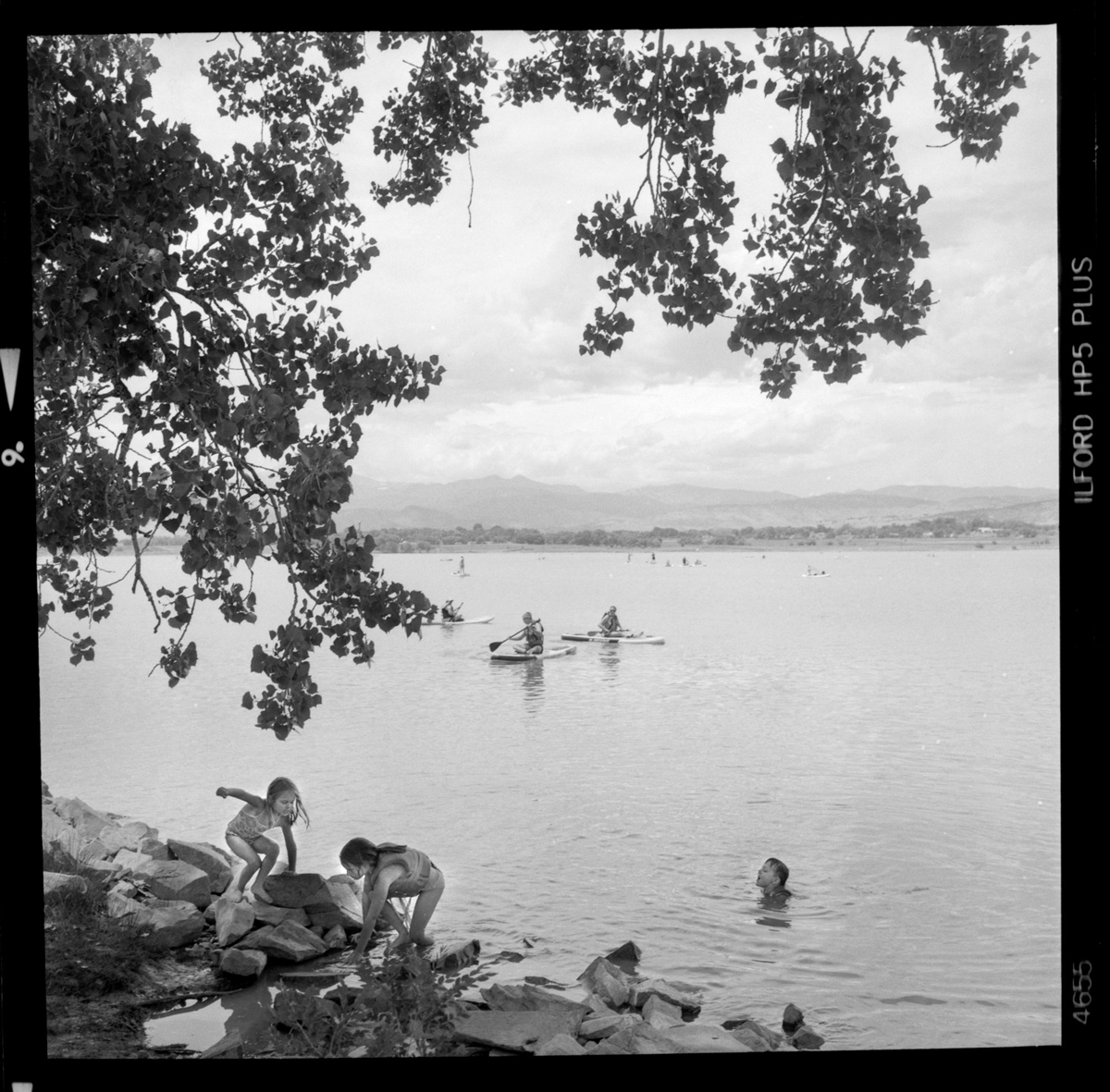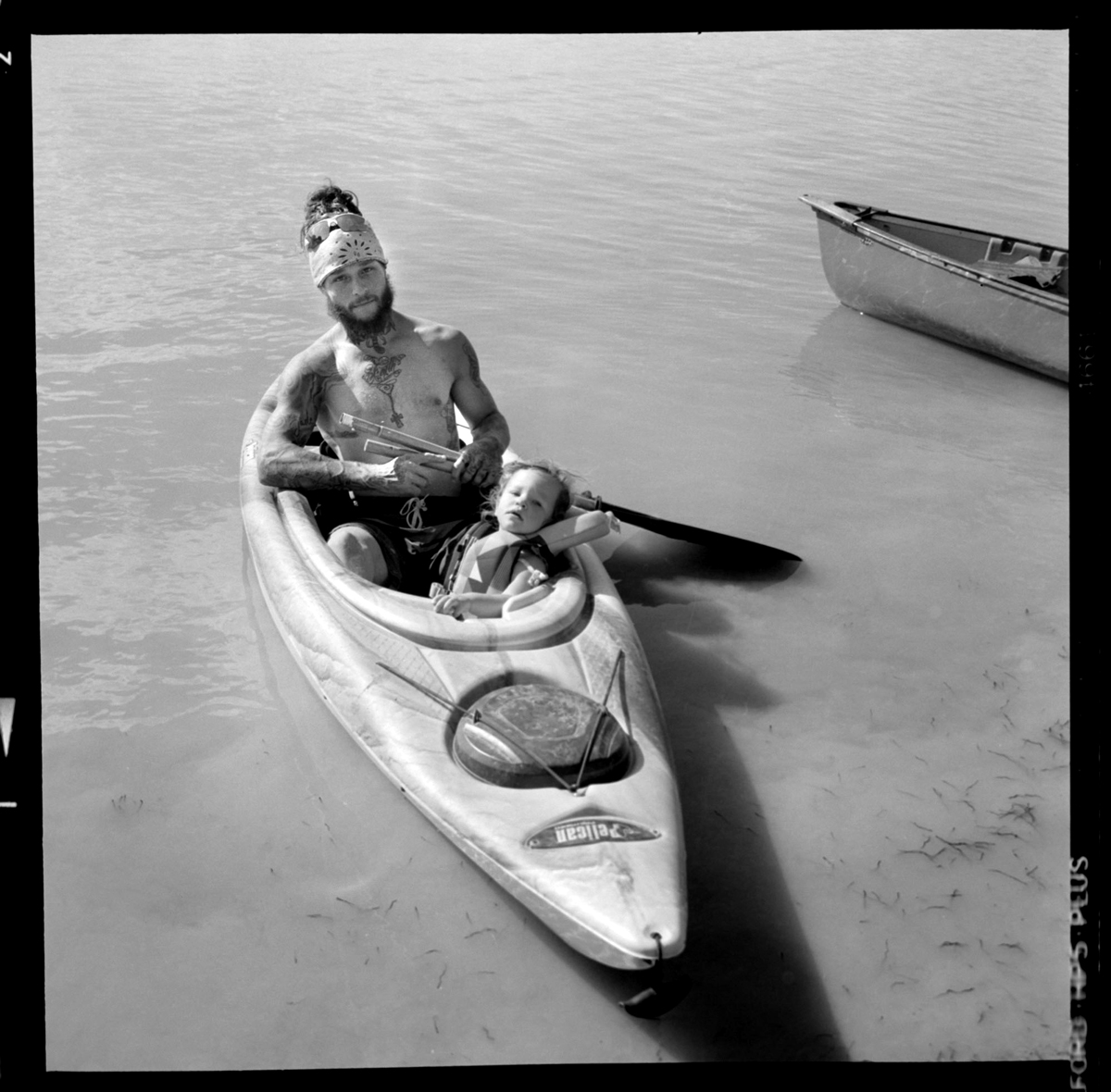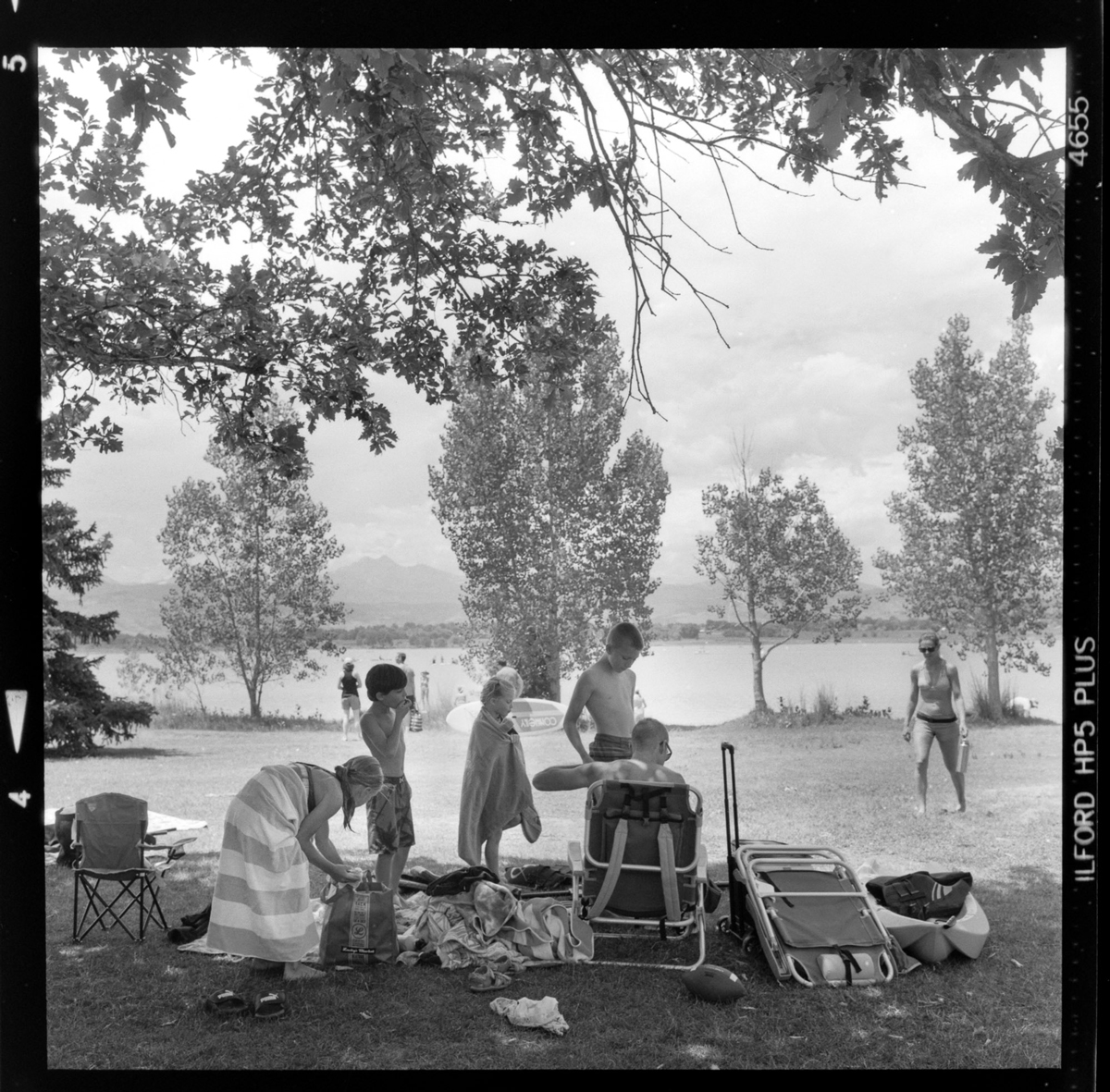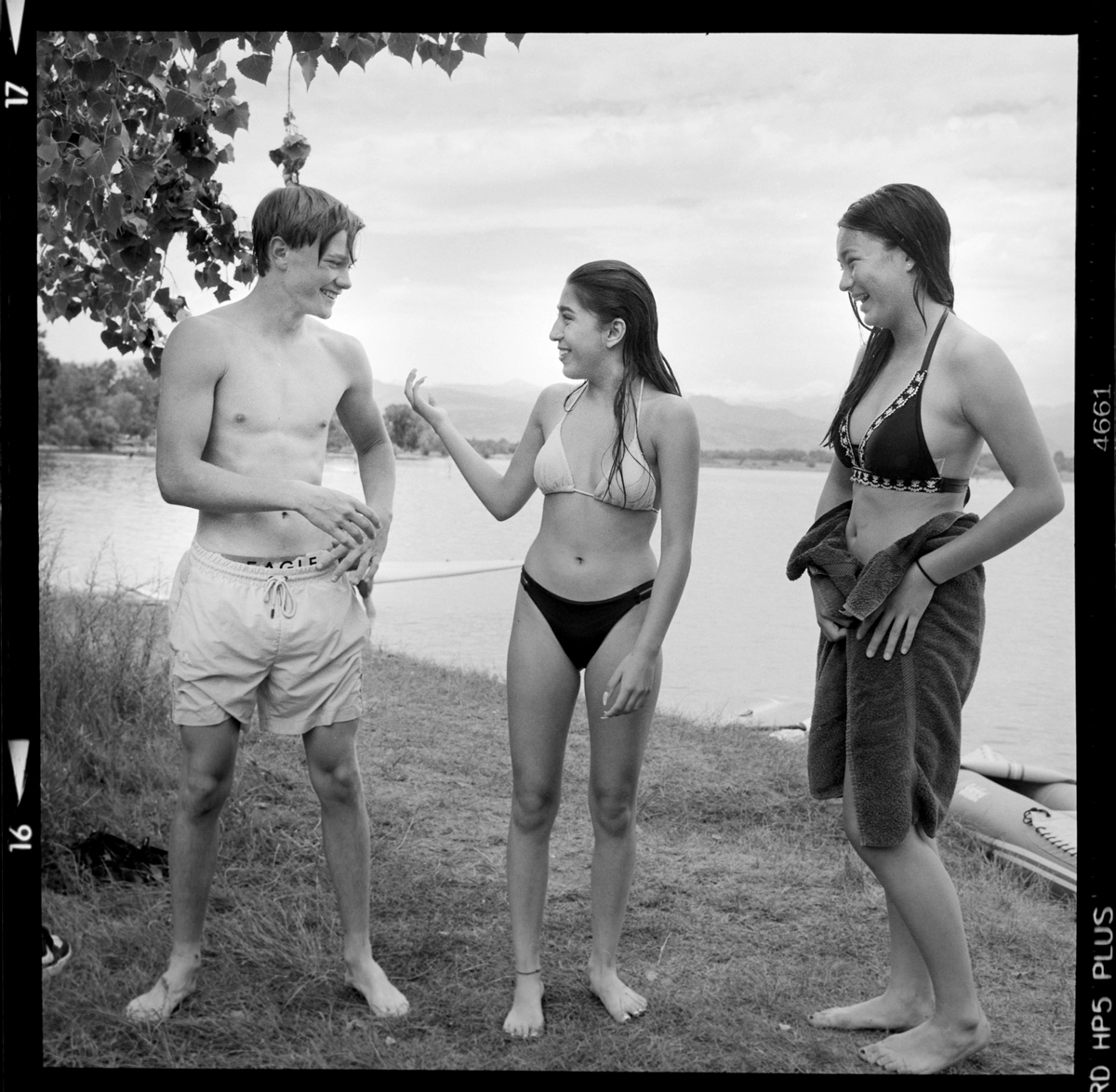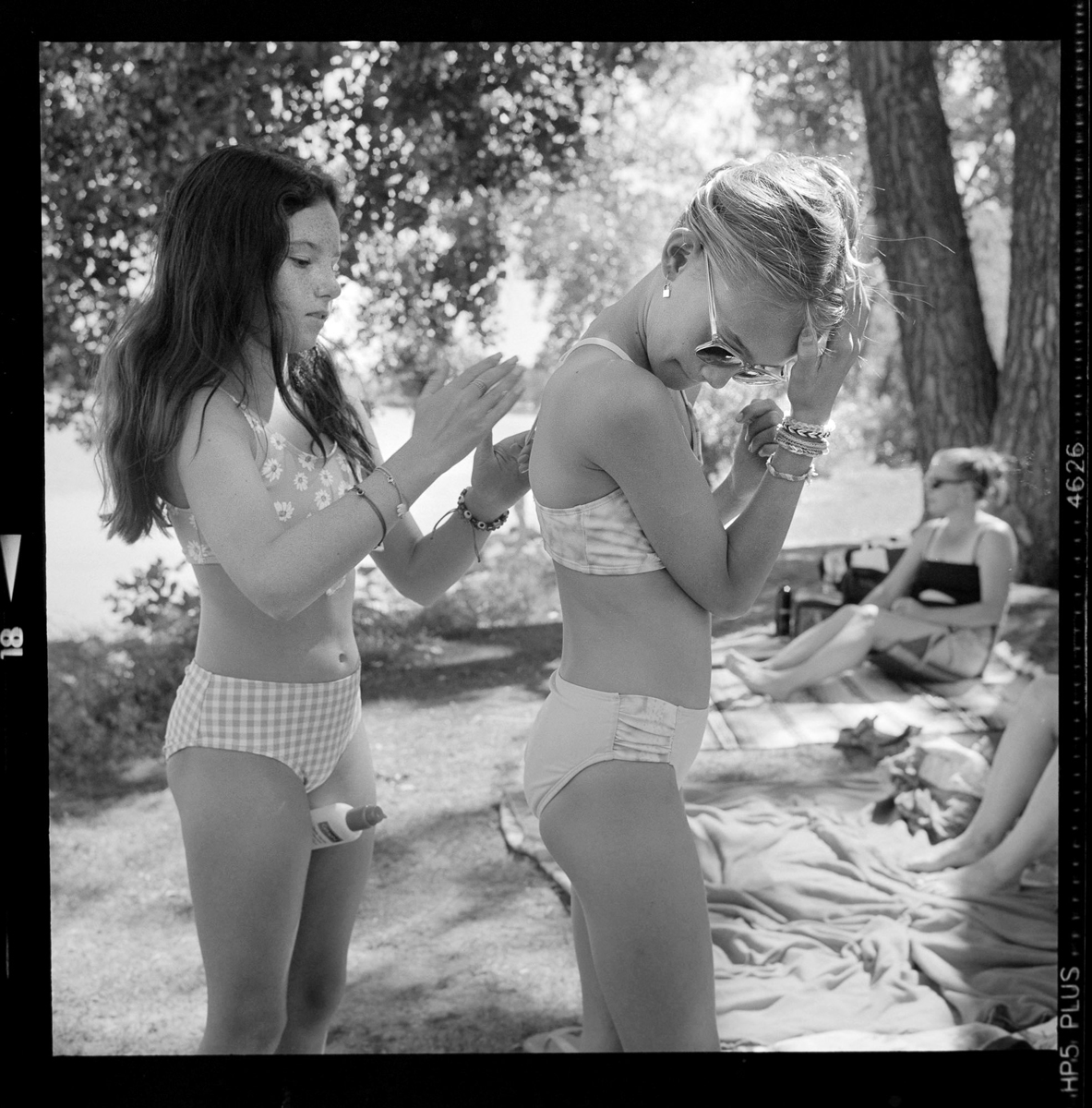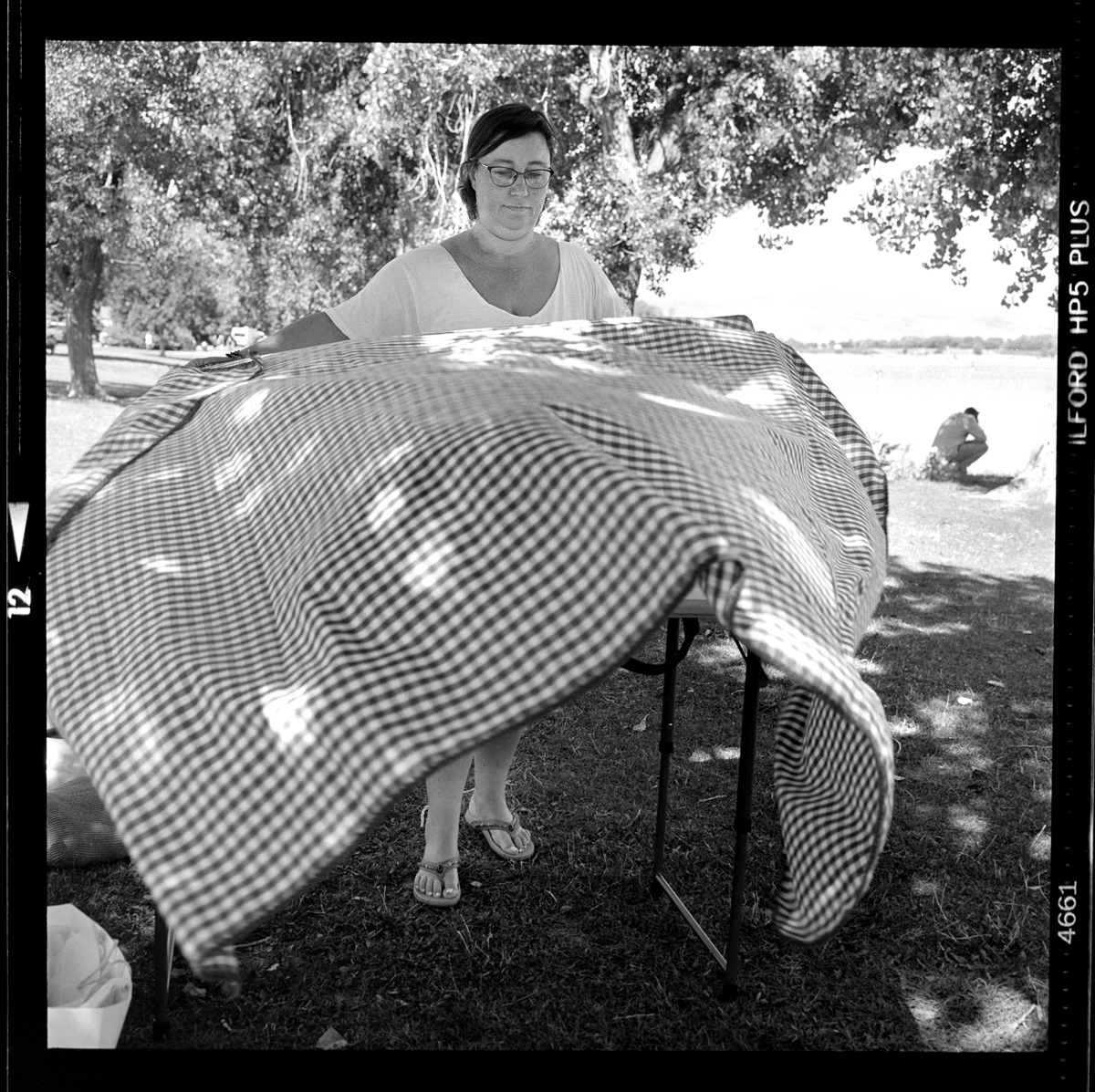Longmont Lake Project Posted On 17th November 2022 To Magazine & Stories

4th of July weekend
It all started with a single roll of 120 ILFORD HP5+ film and a Rolleiflex 3.5F over the Independence Day weekend which fell on a Monday this year. It was the Friday of that long holiday weekend and I loaded the roll of film in the Rolleiflex and took the camera for a ride to McIntosh Lake in Longmont Colorado (USA) in the hopes of finding worthwhile photo subjects. My goal was to find street portraits and storytelling photographs.
What it became over the next ten weeks is the Longmont Lake Project.
Looks Like Nothing
What I found most interesting is that each time I drove to the lake and pulled up to the curb, it looked like a bust—"Nothing to see here, move along,"—seemingly nothing to photograph that was even remotely interesting that I could see from my driver's seat. Still, I forced myself to at least park the car and take a short walk along the trail that wraps around the lake. I figured at the best, some photographic opportunities will materialize and at worst, I'll get a walk in.
On the first day, I found 12 things to photograph. I went home, developed them and was ecstatic with the images I had created, the most beautiful black and white portraits and documentary photographs of this "outdoor theater" starring these "Longmont Lake Players".
I went back the next day, Saturday, and exposed another roll. Then again Sunday and Monday the 4th, the holiday. Each time, without fail, I'd find 12 things to photograph. Each and every time!
Please Allow Me To Introduce Myself
A bit about me. I've been a commercial and editorial photographer for over 35 years and throughout that time, when between assignments in cities throughout the U.S., I have been making street photos so I feel very comfortable photographing people in public. I consider myself always on assignment so I approach my subjects like I belong there—I'm working.
I always have an answer ready if someone asks why I'm making photographs. All they really want is a credible answer, and I walked up to many people to make these photographs with the line, “Hi, I'm working on a documentary project photographing the lake this summer, may I photograph you doing what you're doing? You can see the work at LongmontLakeProject.com.”
I had already registered the domain and built a site for the project with some of the previous photos so there was no doubt about it being a real art project and they were glad to be part of it.
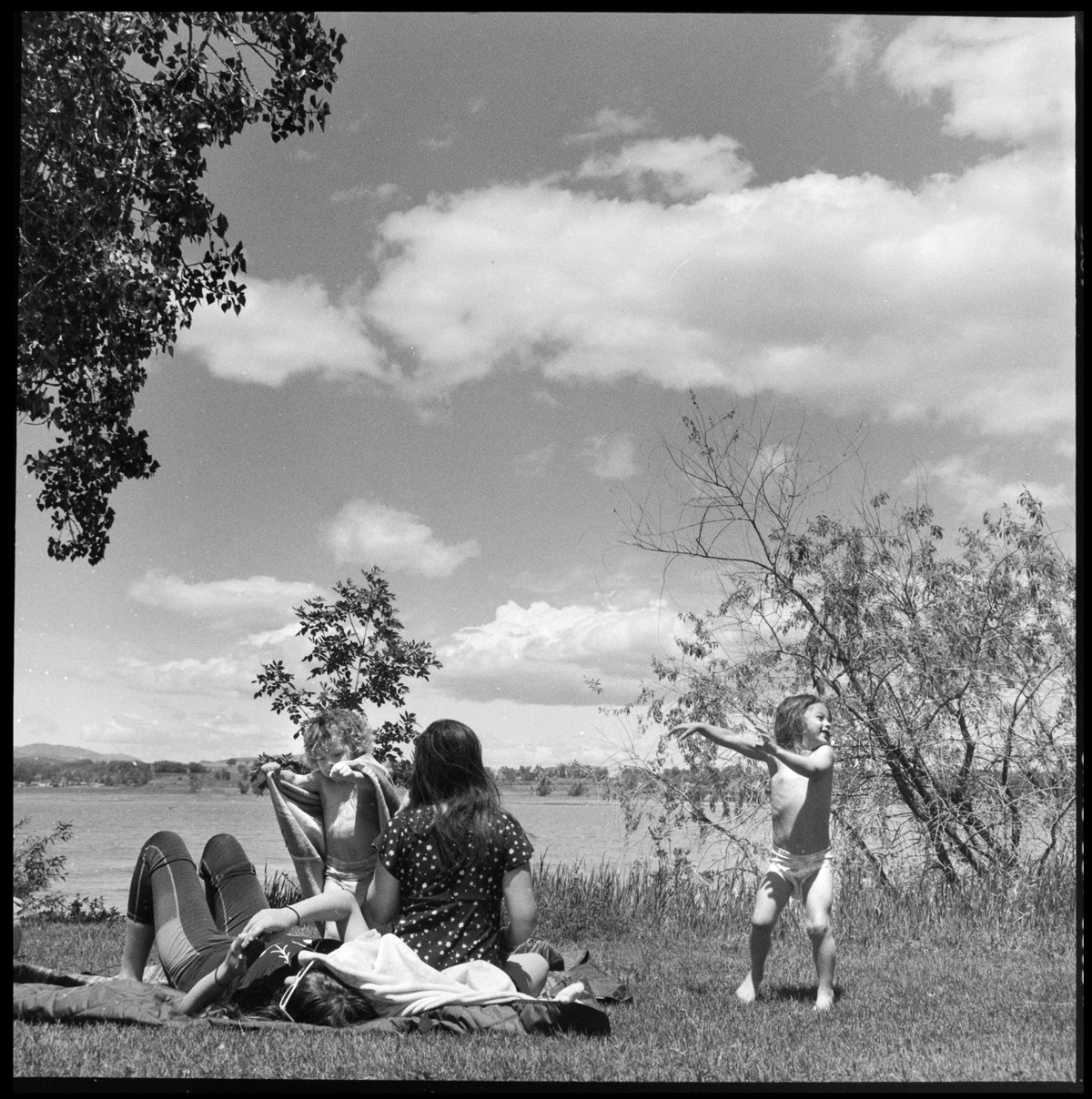
Where is the Muse?
The muse shows up when we go out and do the work. It doesn't happen that we get inspired before we start working. Inspiration was never along with me in the car on the way to the lake. I had to get out and move, get to work. The more I went, the more photographs I found and made. I followed it up the following weekends by going out and using a roll or two. Then I headed back to the studio to develop the film, hang it to dry, and see what I had.
Home processing makes film photography extremely quick and affordable. I use Kodak HC-110 Dilution B for 5 minutes, tap water for stop bath for 30 seconds, Ilford Rapid Fixer for 5 minutes, wash it for 10 minutes, a minute in Kodak Photo-Flo, and then hang it to dry. Simple and inexpensive, no darkroom needed, just a changing bag and some film reels and tanks.
Will They Turn Out?
Light is always the same and film is 100% predictable. When people ask if I think the photos will "turn out". I say, "They always turn out." As long as the camera is working, the film is good (and it is, I use fresh stock), it has to turn out. Even without a light meter which is my preferred way to work, I just go with the 400-speed ILFORD HP5+ and use sunny 16 to estimate exposure. With that as my guide, I know the setting in bright sun in summertime is 1/400 at f16. For this project, to protect the shadows, I chose to open up 1 3/4 stops to 1/250 at f11. That was my base setting for all of these photographs, it's what the camera was set for on every sunny day as I stepped away from the car.
On a bright sunny day—Colorado averages 300 sunny days a year—I know I can photograph all afternoon at 1/250 at f11—the highlights I can always pull back, and with those settings I guarantee I'll hold shadow detail if the subject is backlit because I'm already opened up almost two stops. If I am photographing a person under an umbrella or any other situation with possibly even less light, I open up to f8 or f5.6. Late in the day, when the sun isn't as strong, I open the aperture wide to f3.5.
Film Is Consistent
Using this method, I created perfect negatives. I never wished I had used a meter instead. I do carry one in my bag but it's for unusual lighting situations, not full sun on a summer day. Having used ILFORD HP5+ for so long and as it's my go-to for film photography, I make sure to keep a large stock of it on hand—I have a refrigerator full of it. It's my favourite film in 35mm and 120. 4x5 and 8x10 is what I need to stock next.
Moreover, I find HP5+ perfect for all of my documentary film photography work. It scans beautifully (I make DSLR scans on a Kaiser lightbox copy stand) and it prints wonderfully in the darkroom.
I continued creating images for this project throughout the summer, concluding it on Labor Day, the unofficial end of summer in the U.S. It worked out to be such a great local location to go back and meet new people, get out and say hello with a Rolleiflex in hand. The Rolleiflex really is a tremendous ice-breaker, no one is threatened by the classic old TLR, in fact some of the subjects were photographed because they inquired about the camera.
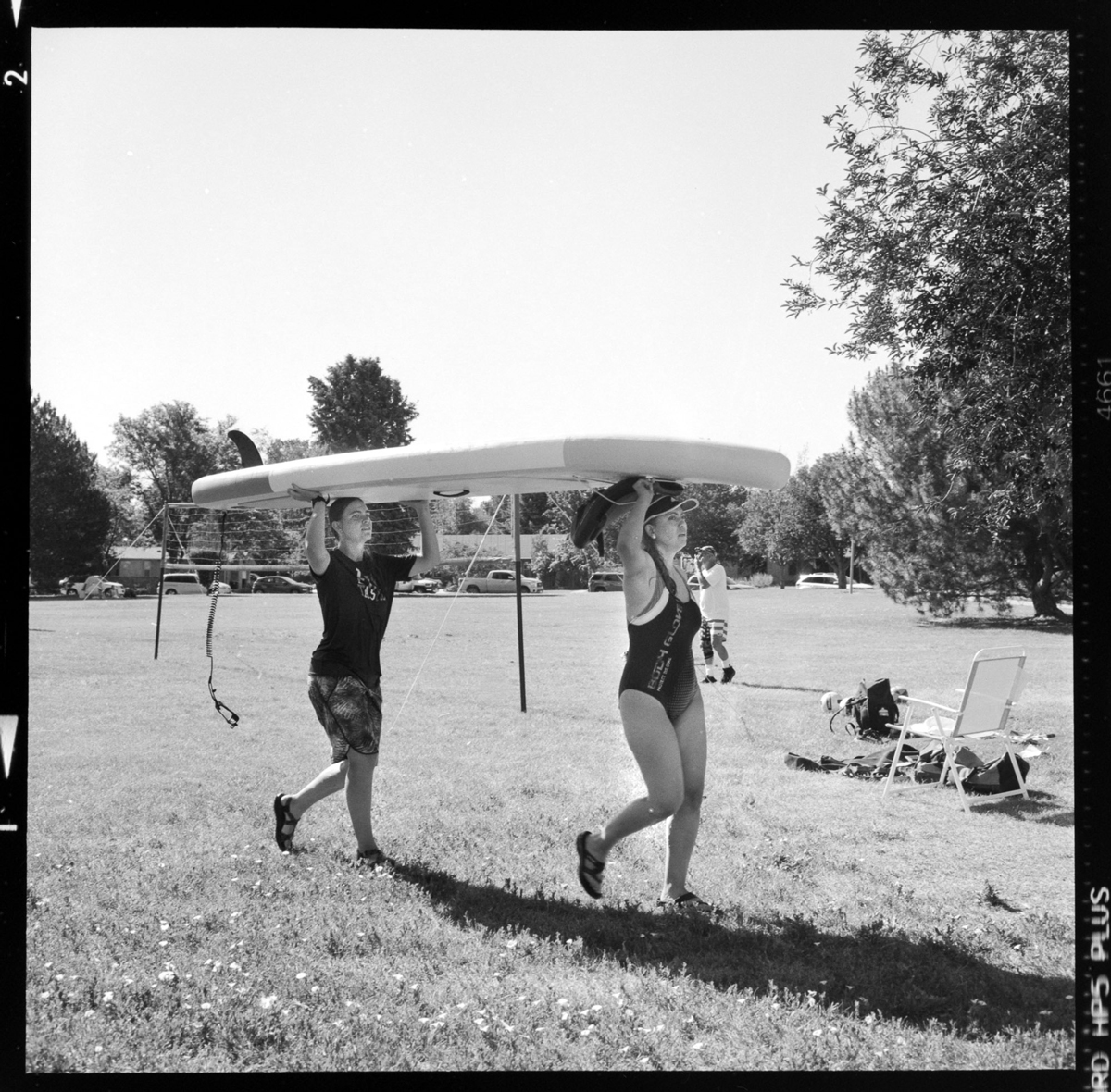
Photographs in Home Galleries Around The World
I always offer prints to the people I photograph if I've had some interaction with them. I give them my card, after all it's all networking. Some take me up on the offer. There's nothing like handing a small 5x5 print to a person you photographed in a small picture frame ready to display or hang. I source picture frames at local yard sales and thrift stores just for this purpose.
I'm a photographer so I make photographs. Real black and white photographs. Some printed by hand, some digitally. It's work that will last because it's printed. It exists. I have framed printed photographs in home galleries throughout the world as a result of gifting photographs and portraits to both friends and strangers over the years. (The way I see it, strangers are just friends we haven't met yet, right?)
Working on the project and having a deadline was certainly what kept me going. It gave me direction for where to head on every weekend day. I knew once I went, there was no telling who I'd meet, or what I'd find. And I knew I would find some gems—I always do.
As with all artistic endeavors, I know I just have to go out and do the work. Just have to show up and get started.
The muse exists but she has to find me working!
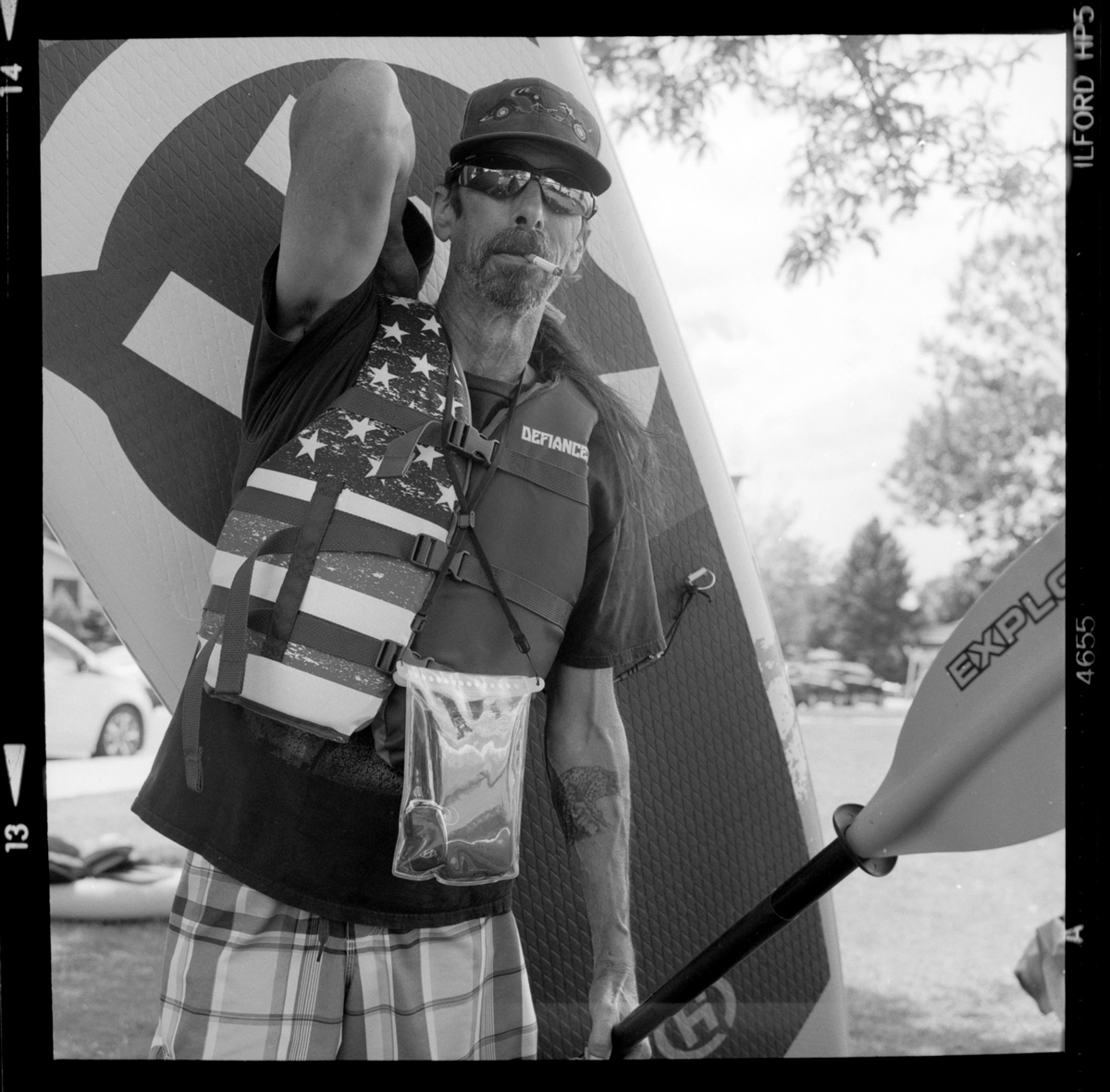
About The Author

Kenneth Wajda
Kenneth Wajda began his career as a staff photojournalist at a daily newspaper in Trenton, New Jersey in 1988, where he photographed everything from U.S. Presidents to little leaguers, professional athletes, and movie stars as well as local news, car accidents, house fires, criminals having their day in court and many food and fashion feature stories. He’s photographed Vice President Dan Quayle misspelling “potatoe”, is the only one with a photo of Major League Baseball Hall of Famers Reggie Jackson and Jim Palmer comparing Hall of Fame rings (no other photographers were there), and had one exclusive hard news story when his Colorado town was flooded, all roads in and out were cut off, and for three days he was the only photographer getting images out to the Associated Press, photos that ran in newspapers throughout the world.
He now works as a freelance commercial, advertising, portrait, and editorial photographer based in Denver and Los Angeles with clients including Google, ACA Connects, Zimmer Biomet, WhiteWave/Silk, Mosaic Marketing, C2HR, National Beer Wholesalers Association, U.S. Air National Guard, and U.S. Air Force.
Kenneth is a member of the American Society of Media Photographers (ASMP), National Press Photographers Association (NPPA) and the Colorado Press Association (CPA).
He teaches photography at the Colorado Photographic Arts Center (CPAC) in Denver as well as mentors students one-on-one in-person and online, offering courses in film and digital photography, street photography workshops, and medium and large format film photography.
KENNETH’S LINKS
Portfolio Site: KennethWajdaPhotographer.com
Street Photography: ColoradoFaces.com
YouTube Channel: HeresToGoodLight.com
Photography Blog: 6x6Portraits.com
Instagram: KennethWajdaPhotographer
Twitter: KennethWajda
LinkedIn: KennethWajda







